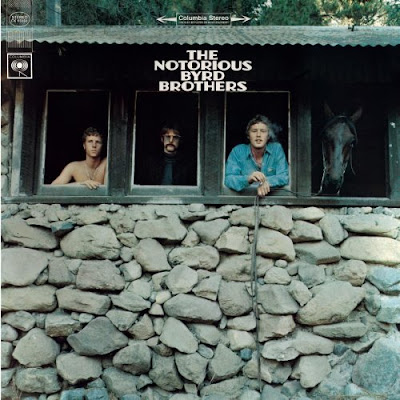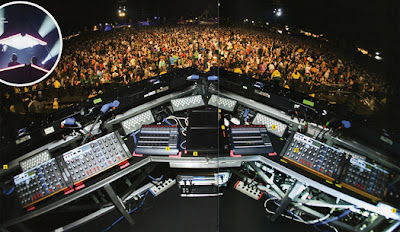This one in via Micke on AH, posted here with permission. If you can add to the list feel free to in the comments. "Here follows a number of early recordings that feature the Moog modular synthesizer, all of them from 1967.

The first commercial recording to feature a Moog Modular is afaik Cosmic Sounds by Zodiac which was recorded in the around the summer of 1967.
[
image source]

The first pop/rock album to feature a Moog modular is I believe either "Pisces, Aquarius, Capricorn, & Jones, Ltd." by The Monkees or "Strange Days" by The Doors, both of which were released in October/November 1967.
[
image source : also see
front]

The Byrd's "The Notorious Byrd Brothers" was also recorded in the same period (i.e. fall of '67) but wasn't released until Jan '68.
[
image source]

The first record to be entirely recorded with a Moog modular is most likely Beaver & Krause's "The Nonesuch Guide To Electronic Music", released at the end of 1967.
[
image source]

Electronic music pioneer Paul Beaver was involved in all of the above recordings, programming and (in most cases) playing the Moog, an early 1966/67 model "Synthesizer III": Moog synthesizer III (1967). This early model came with a different module configuration and was slightly wider by 4 inches than the later model IIIC. [
image source]
Have I missed any other album from 1967, or earlier, that features the Moog modular? if so, feel free to add to my list."
Micke"
Note: you can probably pick these up on Amazon or maybe even Ebay. I did not include affiliate links in this post as I thought it would be disrespectful to Micke and the post, but... if you are planning to pick any of these up and you want to support this site, feel free to scroll down to the album section on the right and click on any of the links to search for these.
 "The rumors are true. (Well, most of 'em, anyway.) Dave has emerged from his underground lair (the Dave Cave?) with a fresh take on a classic, the all new Prophet '08. It is an eight-voice synthesizer with a 100% analog audio signal path. And it will be shipping very soon. More details will be available here on the Web site in a few days. Following hot on its heels will be the Prophet '08 Special Edition, each of which
"The rumors are true. (Well, most of 'em, anyway.) Dave has emerged from his underground lair (the Dave Cave?) with a fresh take on a classic, the all new Prophet '08. It is an eight-voice synthesizer with a 100% analog audio signal path. And it will be shipping very soon. More details will be available here on the Web site in a few days. Following hot on its heels will be the Prophet '08 Special Edition, each of which  will be hand-signed by Dave and which will feature lighted wheels (RED!) and exotic leopardwood end panels. And for those of you who are wondering what happened to BoomChik, stay calm. Do not panic. Development is progressing nicely. Stay tuned!
will be hand-signed by Dave and which will feature lighted wheels (RED!) and exotic leopardwood end panels. And for those of you who are wondering what happened to BoomChik, stay calm. Do not panic. Development is progressing nicely. Stay tuned!




















































